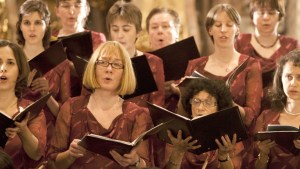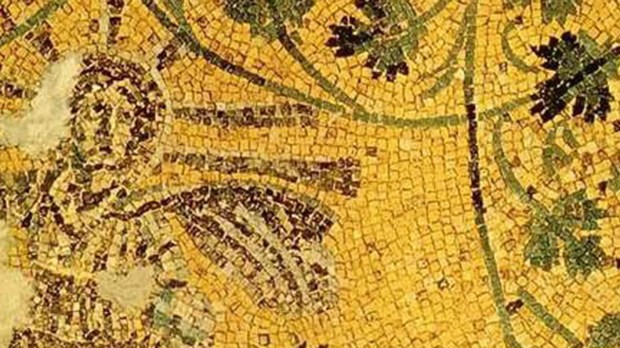Why we observe Christmas on December 25 has nothing to do with the fact that ancient Romans celebrated the return of the Sun around that time of year.
Instead, the pagan festival of the “Birth of the Unconquered Sun,” which was instituted by Emperor Aurelian in 274, was “almost certainly an attempt to create a pagan alternative to a date that was already of some significance to Roman Christians,” a professor of history says.
The “pagan origins of Christmas” is a myth, according to William J. Tighe, associate professor of history at Muhlenberg College in Allentown, Pennsylvania.
Writing in Touchstone magazine, where he is a contributing editor, Tighe explains that Christians had already settled on the December date as a secondary effect of determining the date of Jesus’ death and resurrection.
“There is evidence from both the Greek East and the Latin West that Christians attempted to figure out the date of Christ’s birth long before they began to celebrate it liturgically, even in the second and third centuries,” Tighe writes. “The evidence indicates, in fact, that the attribution of the date of December 25 was a by-product of attempts to determine when to celebrate his death and resurrection.”
But in order to do that, they first had to “translate” the date of Passover from the old Jewish calendar to their own calendars: first the Greek and then the Roman.
“Greek Christians seem to have wanted to find a date equivalent to 14 Nisan [on the Jewish lunar calendar] in their own solar calendar, and since Nisan was the month in which the spring equinox occurred, they chose the 14th day of Artemision, the month in which the spring equinox invariably fell in their own calendar,” he writes. “Around A.D. 300, the Greek calendar was superseded by the Roman calendar, and since the dates of the beginnings and endings of the months in these two systems did not coincide, 14 Artemision became April 6.”
Latin Christians in Rome and North Africa, on the other hand, calculated that Christ died on Friday, March 25 in the year 29.
That date — March 25 — is familiar, of course, as the feast of the Annunciation, commemorating the appearance to Mary of an angel who told her she would bear the Son of God. It is, therefore, the date of the Incarnation, the conception of Jesus.
Integral age
This is where it gets interesting, because according to an idea that was widespread in Judaism at the time of Jesus — the concept of “integral age” — the great prophets died on the same dates as their birth or conception.
“This notion is a key factor in understanding how some early Christians came to believe that December 25 is the date of Christ’s birth,” Tighe writes. “The early Christians applied this idea to Jesus, so that March 25 and April 6 were not only the supposed dates of Christ’s death, but of his conception or birth as well. There is some fleeting evidence that at least some first- and second-century Christians thought of March 25 or April 6 as the date of Christ’s birth, but rather quickly the assignment of March 25 as the date of Christ’s conception prevailed.”
On the Julian calendar, followed by many Orthodox Christians, the Annunciation is observed on April 6.
And, of course, nine months after these dates come the celebrations of the Nativity: December 25 in the Western Church and January 7 in the East, with January 6 observed as Epiphany in the West.
Tighe continues:
Christmas (December 25) is a feast of Western Christian origin. In Constantinople it appears to have been introduced in 379 or 380. From a sermon of St. John Chrysostom, at the time a renowned ascetic and preacher in his native Antioch, it appears that the feast was first celebrated there on 25 December 386. From these centers it spread throughout the Christian East, being adopted in Alexandria around 432 and in Jerusalem a century or more later. The Armenians, alone among ancient Christian churches, have never adopted it, and to this day celebrate Christ’s birth, manifestation to the magi, and baptism on January 6th.Western churches, in turn, gradually adopted the January 6 Epiphany feast from the East, Rome doing so sometime between 366 and 394. But in the West, the feast was generally presented as the commemoration of the visit of the magi to the infant Christ, and as such, it was an important feast, but not one of the most important ones — a striking contrast to its position in the East, where it remains the second most important festival of the church year, second only to Pascha (Easter).In the East, Epiphany far outstrips Christmas. The reason is that the feast celebrates Christ’s baptism in the Jordan and the occasion on which the Voice of the Father and the Descent of the Spirit both manifested for the first time to mortal men the divinity of the Incarnate Christ and the Trinity of the Persons in the One Godhead.
“Thus, December 25 as the date of the Christ’s birth appears to owe nothing whatsoever to pagan influences upon the practice of the Church during or after Constantine’s time,” he concludes. “It is wholly unlikely to have been the actual date of Christ’s birth, but it arose entirely from the efforts of early Latin Christians to determine the historical date of Christ’s death.
“And the pagan feast which the Emperor Aurelian instituted on that date in the year 274 was not only an effort to use the winter solstice to make a political statement, but also almost certainly an attempt to give a pagan significance to a date already of importance to Roman Christians. The Christians, in turn, could at a later date re-appropriate the pagan ‘Birth of the Unconquered Sun’ to refer, on the occasion of the birth of Christ, to the rising of the ‘Sun of Salvation’ or the ‘Sun of Justice.’”

Read more:
Before Christmas carols, Christians sang these holiday hymns

Read more:
Physicist: ‘Star of Bethlehem’ may have been planetary alignment

